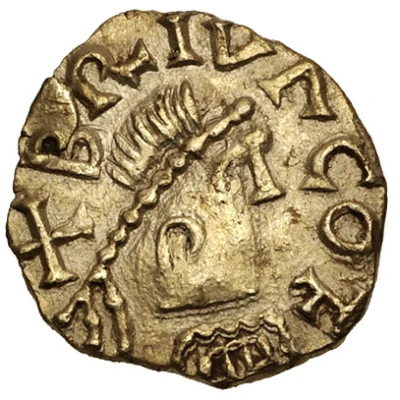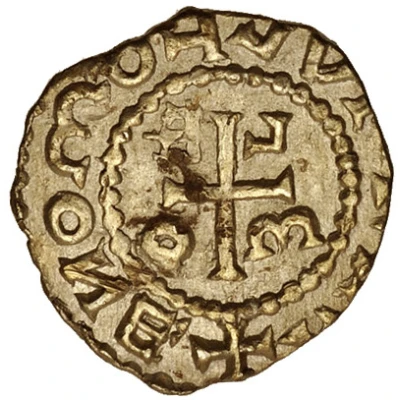


© Classical Numismatic Group, Inc.
Tremissis - Moneyer Mariulfus Brive
| Gold | 1.23 g | 13 mm |
| Location | Kingdom of Aquitaine (Frankish Kingdoms) |
|---|---|
| Moneyer | Mariulfus |
| Type | Standard circulation coin |
| Years | 590-670 |
| Value | 1 Tremissis (⅓) |
| Currency | Tremissis (476-670) |
| Composition | Gold |
| Weight | 1.23 g |
| Diameter | 13 mm |
| Shape | Round (irregular) |
| Technique | Hammered |
| Orientation | Variable alignment ↺ |
| Demonetized | Yes |
| Updated | 2024-10-09 |
| Numista | N#194055 |
|---|---|
| Rarity index | 100% |
Reverse
Cross pattée; retrograde L E m O in quarters.
Script: Latin
Lettering: ✠ mΛRIVLFO mONE
Unabridged legend: MARIULFUS MONETARIUS
Translation: Moneyer Mariulfus.
Interesting fact
One interesting fact about the Tremissis coin made by Moneyer Mariulfus (Brive) is that it was used as a form of currency during the Early Middle Ages, specifically in the Frankish Empire. It was first introduced by King Childebert II in 590 AD and remained in circulation until 670 AD. Despite being made of gold, the Tremissis was not a high-denomination coin and had a relatively low value compared to other coins of the time. Its name "Tremissis" comes from the Latin word "tremisse," meaning "three times," likely referring to the coin's value being one-third of a solidus, the standard gold coin of the Byzantine Empire.